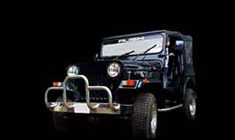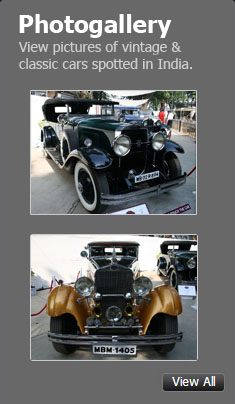News
Why Indian bus makers have not had success with the rear engine layout
Volvo has mastered this space, I don't know what's the insurmountable technical challenge for the Indian manufacturers, when they seem to have handled other seemingly more complex things.
BHPian RRA_Blogger recently shared this with other enthusiasts.
I have heard that the rear engine configurations that Leyland has tried have not lasted long.
For instance, below is a sourced picture:

Next to that SETC can be spotted short lived Leyland rear engine SLFs of MTC. They have apparently sustained for not more than 2-3 years since 2006.
Also, the Leyland Luxura that may have rolled out during 2011-2012 has also not gotten significantly famous.
I may stand corrected if I am wrong with these statistics. But yes, these are as I have heard.
Also, I think that the current Multiaxle coach prototype of Leyland may have a very low engine output (250 HP) and a very large rear overhang compared to other Multiaxle fleet.
Can I be enlightened more into these?
Regards,
Akshay.
Here's what BHPian vharihar had to say on the matter:
Not just AL, but TM too. Somehow the Indian mfrs haven't done well on the rear engine bus space at all.
All seem underpowered and noisy and struggling to run even in flatlands like airport tarmacs (TM RE buses struggle even more).
Don't know why. Volvo has mastered this space, I don't know what's the insurmountable technical challenge for the Indian manufacturers, when they seem to have handled other seemingly more complex things.
I've seen TM struggle with this for past 30 years. Is the drivetrain so much more complex to manage from a technical PoV? (almost like fly-by-wire, from front to rear).
I used to work for TM in Pune in early 90's (called Telco then). We used the extensive company bus fleet for commute to/from office (Tata buses, obviously, all with body built by RUBY coach builders, Mumbai). 2-3 buses amongst these were low floor RE buses with body built by RUBY. So I had an occasion to travel in these in early 1990's about 8-9 times. They were extra long, and silent, and I used to look fwd to travel in them.
But sad to say, we'd hear of them breaking down often, and a substitute bus would be sent to us.
So clearly, TM too has been struggling with RE buses for 30+ years.
Here's what BHPian svsanthosh had to say on the matter:
Because they (or any other maker in India) have not really tried to engineer a real 'rear end' HCV. Yes they launched one but expected the public to test it for them. Doesn't work like that, right?
Volvo have engineered the solution years ago. Tata Marcopolo and some other airport shuttle examples are running around but they cannot be compared against the volvo. If those airport shuttles ply between signals stop & go all day and over potholes and what not, they will break apart in no time.
Here's what BHPian DicKy had to say on the matter:
Both Ashok Leyland and TATA rear engined low floor buses have had pathetic reliability under KSRTC. Would frequently break down. Personally hated those buses since there are only a dozen seats really low floor. Rest of the seats are in varied heights with the rearmost seats being horrible to say the least.
But the current City Circular low floor buses which are front engined are a bliss. Flat low floor from the front end till the rearmost end. More comfortable to use. Can only remember seeing TATA Marcopolo, not sure if there are ALs too.
Is there any particular advantage for rear engined low floor buses? Except the NVH factor for the driver and front passengers?
Here's what BHPian Anwesh had to say on the matter:
The AL Panther bus chassis was introduced around 1989/90, so that marks 32 years of struggle for AL.
The Tata Divo luxury coach was better than the Volvo B7R. The few operators who purchased it were happy, but passanger perception of TATA not being a premium brand went against it. Even MB faced this, as passangers perceived Volvo as the ultimate luxury bus.
The Divo would have fared better if TaMo had used the Hispano brand on it, without the TATA logo.
Regards,
Anwesh.
Here's what BHPian GeeTee TSI had to sayon the matter:
Historically India has been plying trucks under the garb of buses, with no bus specific chassis, drivetrain or suspension till early noughties (that's decades by international standards). Probably there wasn't any R&D effort from the OEMs nor market demand.
That said, the interstate AL front engined coaches are very refined with engine smoothness sometimes rivalling the Volvos (own perception). However inside the passenger compartment thanks to better NVH engineering, the Volvos seem quieter.
I wonder if automatic transmissions also fell behind on priorities of homegrown OEMs along with rear engine configuration.
Check out BHPian comments for more insights and information.

















